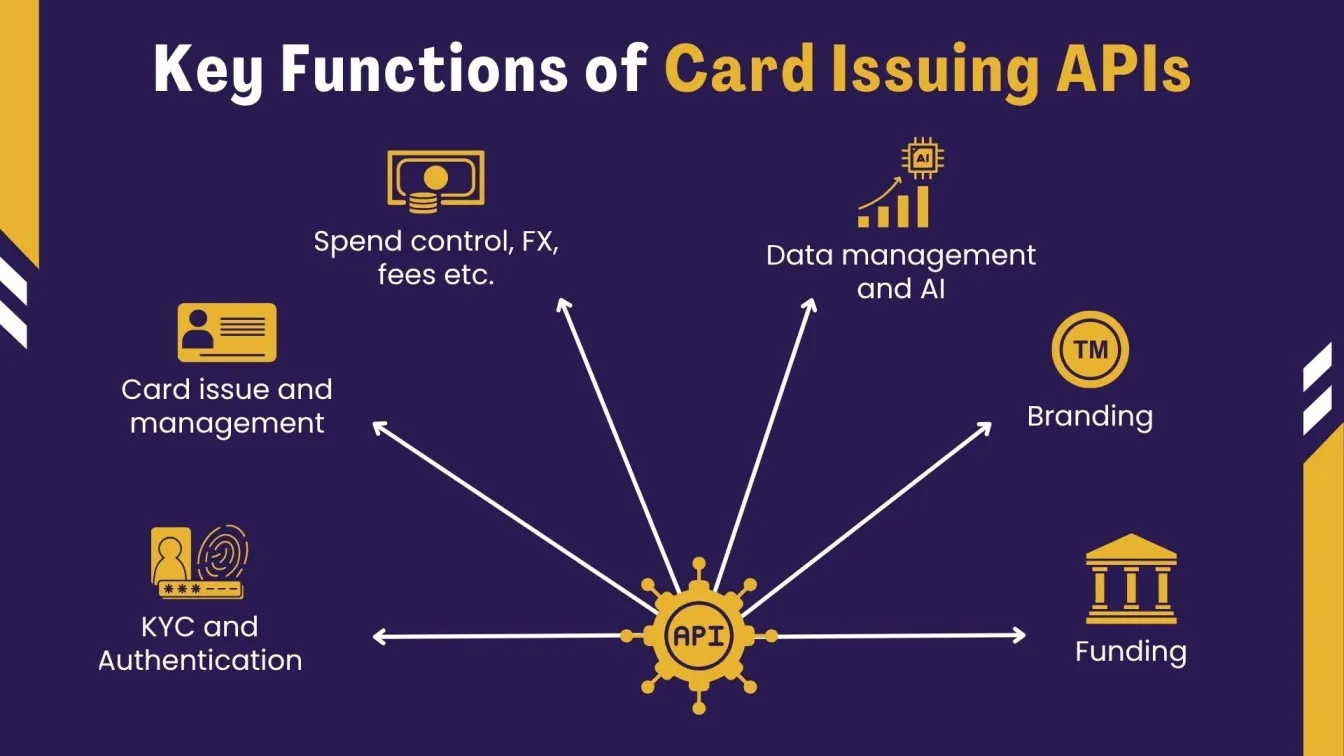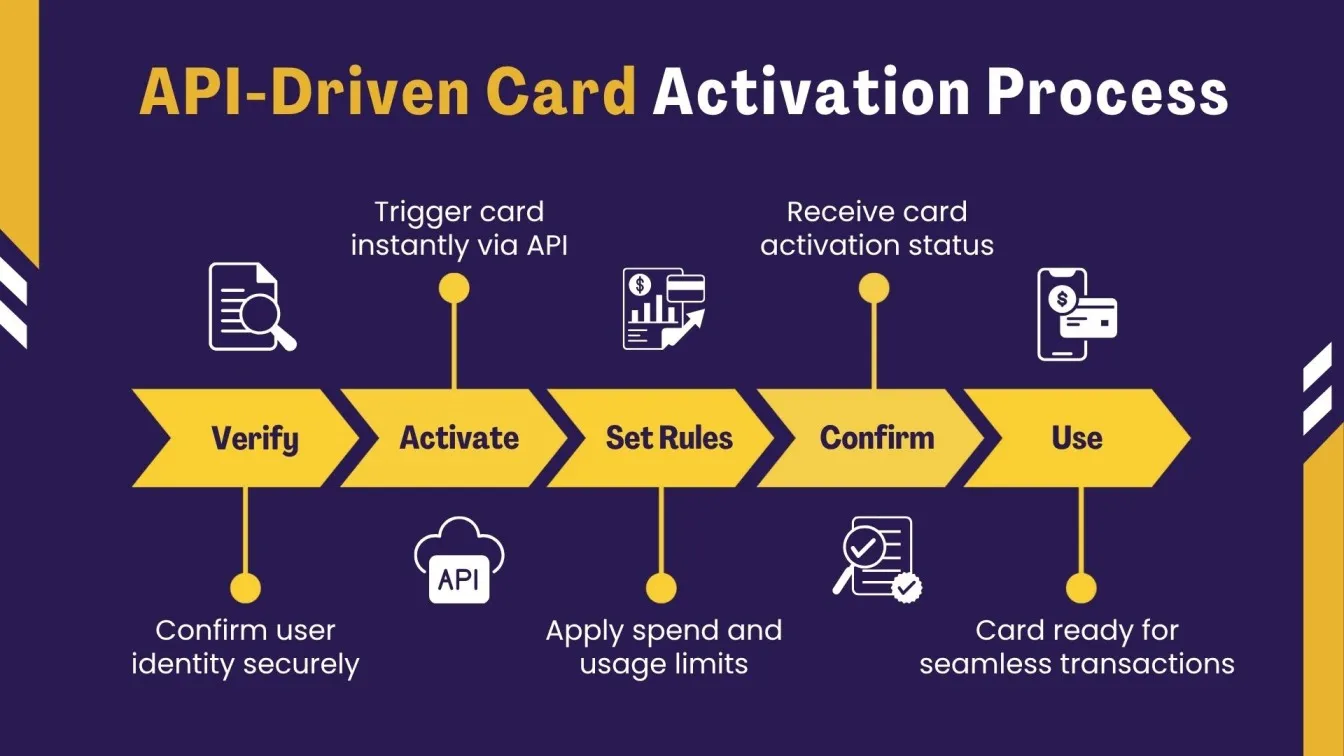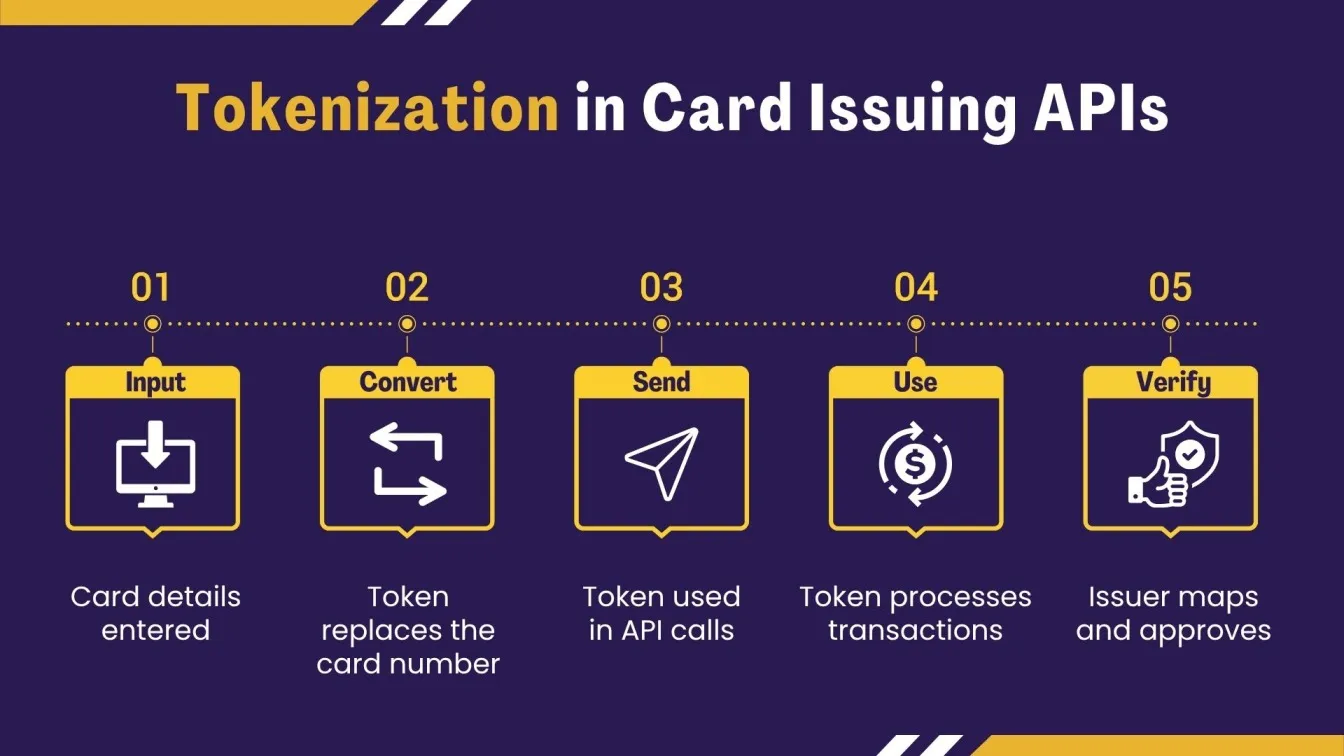Securing APIs in card issuing platforms is essential for any fintech startup entering the digital payments space. From virtual cards to spend controls, card issuing APIs handle sensitive financial data that must be protected against growing cyber threats. An unsecured API can quickly lead to data breaches, compliance issues, and reputational damage.

This guide provides a practical approach for fintech startups seeking to establish trust and resilience through secure API development. We’ll cover common vulnerabilities, industry best practices, and real-world tips to help you secure your card issuing APIs effectively and efficiently.
What’s Next? Keep reading to discover:
🚀 Card Issuing APIs - A closer look at how they power digital payments.
🚀 API Security Challenges - Real-world risks faced by fintech companies.
🚀 Best Practices - How leading fintech startups secure their APIs.
🚀 Testing Secure APIs - Why development and QA matter in fintech platforms.
🚀 Final Thoughts - Building trust through secure card issuing solutions.
What Are Card Issuing APIs?
Card Issuing APIs are secure, programmable interfaces that allow fintech startups to issue and manage virtual or physical payment cards digitally. They connect platforms with card-issuing authorities, enabling features such as authentication, encryption, Know Your Customer (KYC), and regulatory compliance, thereby supporting seamless, scalable, and secure fintech payment solutions.
How Card Issuing APIs Work:
Step 1: Platform Integration
The fintech startup begins by integrating its backend with a card issuing platform using secure API keys, SDKs, and OAuth authentication. This integration forms the technical foundation for secure communication between the fintech system and the application programming interface (API) provider.
Step 2: Customer Onboarding & KYC
Before issuing a card, the user's identity is verified using API-based KYC tools. These tools support document uploads, biometric validation, and third-party integrations, ensuring compliance with legal and regulatory obligations for financial services.
Step 3: Card Creation Request
Once verified, the fintech platform uses a secure API call to issue a virtual or physical card. Details such as card type, currency, spending rules, branding, and expiration are configured using the card issuing API, forming the core of a modern fintech solution.
Step 4: Tokenization & PCI Compliance
To protect cardholder data, APIs perform tokenization, replacing actual card details with encrypted tokens. This ensures PCI DSS compliance and supports strong encryption methods, including end-to-end encryption and advanced encryption algorithms for safe transactions.
Step 5: Card Activation & Controls
The issued card is activated through API calls. Usage rules like multi-factor authentication, spend limits, location restrictions, and transaction types can be defined, allowing fintech companies to create precise controls using secure authentication layers.

Step 6: Funding the Card
Using funding APIs, the card wallet is topped up. The platform can preload funds, connect to a user’s account, or integrate with external banks. This supports fintech payments by enabling real-time balance updates and seamless settlements.
Step 7: Transaction Authorization & Monitoring
When a card is used, the credit card issuing platform routes the transaction through the issuer and card network. Based on pre-defined API logic, the platform approves or declines transactions instantly. This step ensures security and compliance with regulatory alignment.
Step 8: Real-Time Alerts & Webhooks
The system receives real-time transaction data via webhooks. The platform sends instant SMS, push, or email alerts to users. This flow is vital for user awareness, transaction tracking, and operational transparency in fintech software.
Step 9: Card Lifecycle Management
Throughout the card's life, the fintech system can use APIs to reissue, suspend, block, or terminate the card. Dynamic control over card behavior helps address fraud risks and aligns with regulatory and compliance requirements.
Common Security Issues in Card Issuing
Card issuing APIs play a central role in payment processing, managing payment flows, and connecting to banking APIs and third-party systems through open banking ecosystems. Because they handle sensitive customer experiences, personal data, and financial transactions, these APIs are a top target for fraudsters and cyber attackers. Without security measures, fintech startups and established financial firms risk customer trust, operational stability, and security & compliance violations. Below are the most critical security concerns faced in card issuing.

- Supply Chain Vulnerabilities
Card issuing platforms often depend on third-party SDKs, open-source libraries, or fintech integrations. A vulnerability in any component, especially in less-audited dependencies, can compromise the entire platform. - Shadow or Undocumented APIs
APIs not formally documented or governed may still be active in the system. These “shadow APIs” are hard to monitor and secure, often becoming silent entry points for attackers. - Improper API Version Management
Continuing to support outdated API versions without applying security patches leaves known vulnerabilities open to exploitation. Inconsistent deprecation practices can lead to fragmented and insecure access points. - Excessive Data Exposure
APIs that expose more data than necessary, such as full customer details or card numbers, create unnecessary risk. Attackers may intercept or scrape this data if endpoints are not properly scoped. - Inconsistent Error Handling
Detailed error messages can unintentionally reveal sensitive backend logic, authentication methods, or endpoint structure. These insights can help attackers map and exploit the API surface.
Fixing Common API Security Issues in Card Issuing Platforms
Securing APIs in card issuing platforms is essential for protecting user data, financial transactions, and platform integrity. As best fintech startups scale their services, following structured authentication, encryption, and compliance practices ensures safe operations, prevents fraud, and builds trust across all application programming interface (API) integrations.
Strengthen Authentication with OAuth2 and JWT
Challenge:
Many fintech startups rely on basic authentication or static credentials, which are vulnerable to unauthorized access, replay attacks, and token theft, especially in card issuing platforms managing financial and identity data.
Approach:
Adopt token-based authentication mechanisms like OAuth2 and JWT (JSON Web Tokens). These tokens are securely generated, scoped, and time-bound. They allow safe access to protected application programming interfaces (APIs) without exposing user credentials directly. Tokens can also work alongside multi-factor authentication for additional security.
Why It Matters:
Using OAuth2 or JWT significantly reduces the surface area for attacks and ensures only verified systems access your fintech APIs. This aligns with regulatory compliance requirements and builds trust for secure fintech payment operations.
Enforce Role-Based Access Control (RBAC)
Challenge:
Without proper access control, a single API key or user account may have unrestricted permissions, posing risks of misuse or internal fraud in card issuing platforms.
Approach:
Use Role-Based Access Control (RBAC) to assign specific permissions based on roles like admin, auditor, support, or card issuer. This limits who can access or modify sensitive card settings, user data, or transaction reports.
Why It Matters:
RBAC improves security posture by applying the principle of least privilege. It allows fintech companies to manage internal workflows more securely while staying aligned with legal and regulatory compliance standards.
Encrypt Data with TLS and Validate All Inputs
Challenge:
Exposed APIs without proper encryption and validation are vulnerable to man-in-the-middle attacks, data leaks, and injection threats. Attackers can exploit APIs that don’t verify payloads or enforce HTTPS protocols.
Approach:
Enforce TLS (Transport Layer Security) for all API traffic and implement end-to-end encryption for sensitive data like card numbers and personal information. Validate every input field using sanitization rules and limit accepted formats.
Why It Matters:
This ensures data privacy, prevents injection attacks, and maintains PCI DSS and regulatory compliance standards, vital for any fintech software handling financial information.
Secure and Rotate API Keys, Tokens, and Secrets
Challenge:
Storing secrets in plain text or hardcoded form, and not rotating them, can expose your systems if credentials are leaked or stolen. Many attacks exploit old or unexpired keys.
Approach:
Use a secrets management tool (e.g., AWS Secrets Manager, Azure Key Vault) to securely store and rotate API keys, authentication tokens, and other credentials. Monitor usage and set automatic expiry rules for each secret.
Why It Matters:
This protects core fintech solutions against internal leaks and external threats. Securing credentials is foundational to safe application programming interface (API) design in credit card issuing platforms.
Implement Rate Limiting and API Gateway Control
Challenge:
Without rate limiting or throttling, APIs are prone to abuse through brute-force login attempts, credential stuffing, or denial-of-service (DoS) attacks. These incidents can disrupt services and compromise data.
Approach:
Set up request limits and throttling rules at the API testing level. Define per-user or per-IP rate policies and block suspicious patterns using behavioral analytics. Gateways like Kong, AWS API Gateway, or Apigee offer fine-grained control.
Why It Matters:
Rate limiting keeps your system available and protects it from automated attacks. It's essential for maintaining uptime and trust in your fintech company’s operations, especially when scaling card issuing across geographies.
Key Services Offered by Card Issuing Platforms
Card issuing platforms help fintechs quickly launch and scale digital wallet apps, e-wallets, digital banking, and investment platforms with secure, flexible services. They support high transaction volumes, ensure strong data security, and connect with core banking systems, card schemes, and mobile payments for smooth card issuance, authorization, and personalization.
To ensure reliability, these platforms use regression testing, stress testing, and virtual users to handle peak loads and protect digital assets. This enables seamless mobile financial transactions and builds trust across the digital financial services ecosystem.
- Card Issuance
Instantly issue virtual or physical debit, credit, or prepaid cards with customizable branding, expiration dates, spending categories, and supported currencies. - KYC & Identity Verification
Integrate automated KYC tools to verify users via government IDs, biometric scans, or third-party databases while meeting regional compliance requirements. - Spend Controls
Enable dynamic spend management by setting transaction limits, merchant categories, daily caps, and geographic usage boundaries for each card. - Tokenization & Security
Protect sensitive cardholder information through advanced tokenization, replacing actual card numbers with encrypted tokens to meet PCI DSS and encryption standards.

- Authorization & Monitoring
Real-time authorization engines evaluate every transaction using API logic, fraud detection models, and behavioral analytics to ensure secure approval or rejection. - Lifecycle Management
Manage the full card lifecycle through APIs - activate, suspend, reissue, block, or terminate cards based on customer requests or fraud risk indicators.
Conclusion: Secure Your Card Issuing APIs Effectively
Securing card issuing platforms is no longer optional for fintech startups; it’s a foundational requirement for effective fintech marketing and reliable fraud checks. From onboarding to card issuance and transaction handling, every step must be backed by strong application programming interface (API) security. By implementing measures like OAuth authentication, data encryption, and rate limiting, startups can prevent breaches, ensure regulatory compliance, and maintain operational integrity.

In regulated environments like open banking, integrating APIs with social security card issuing authorities helps payment processors verify user identities securely. To protect this sensitive data, two-factor authentication is used alongside strong types of encryption, such as symmetric and asymmetric algorithms. These implementations are not only part of API security but also necessary for fulfilling compliance with regulatory standards in modern financial technology ecosystems.
Frugal Testing, a leading SaaS application testing company, is renowned for its specialized AI-driven test automation services tailored to meet the evolving needs of modern businesses. Among the comprehensive services offered by Frugal Testing are advanced Fintech Software Testing Services, designed to ensure security, performance, and compliance in financial applications. The company also provides cloud-based test automation services, enabling scalable, efficient, and cost-effective testing solutions.
People Also Ask
What are the risks of hardcoding API secrets in source code?
It can lead to secret leaks through code repositories, allowing unauthorized access. Use environment variables or secure vaults instead.
What does Lithic do?
Lithic provides modern card issuing and payments infrastructure via APIs, enabling fintechs to create, control, and manage virtual and physical cards.
How do mobile apps securely access card-issuing APIs?
Mobile apps safely connect to card-issuing APIs by using secure tokens to check identity, encrypting data with SSL/TLS, and locking connections to trusted servers through certificate pinning. This keeps sensitive information safe and blocks unwanted access..
What is API schema validation?
API schema validation ensures that incoming requests and outgoing responses match a predefined structure, helping prevent malformed data and security vulnerabilities.
How are webhooks secured in card-issuing platforms?
Webhooks are secured using techniques like signature validation, HTTPS, IP allowlisting, and secret tokens to verify the source and integrity of event data.





%201.webp)

